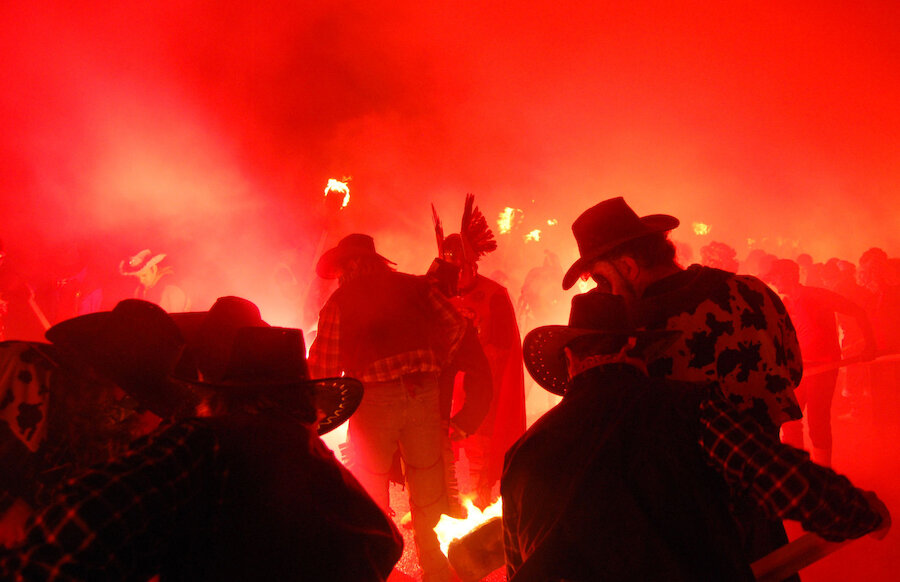From January until March, many Shetland communities stage fire festivals and, although these are local events, visitors come from far and wide.
The best-known of the festivals is Lerwick's Up Helly Aa, always held on the last Tuesday in January, and featuring close to 1,000 torchbearing "guisers". It has found its way into any number of travellers" "must-see" lists but remains very much the local celebration it's always been. However, a couple of bonus events, featuring traditional music and a stand-up comedy show, have been added to the day's programme in recent years, making Up Helly Aa even more memorable for both visitors and local folk.
We have details of all the fire festival dates here, and – if you're planning a winter reconnaissance visit, any of them would give you an insight into what they're all about.
So, what's it like to attend an Up Helly Aa as a local? Anyone who's lived in the islands for any length of time will almost certainly know folk who are involved in one way or another, either as members of one of the squads of guisers or helping with catering or stewarding. Especially in rural areas, it's very easy to get involved; the Lerwick guisers remain all-male, but women and men take part on equal terms elsewhere.
The first part of the day usually involves visits by the leading squad – the Jarl's Squad – to schools and care homes. In the evening, things get going around 7pm, when squads begin to gather, collect their paraffin-soaked torches and form up in ranks ahead of the galley. In Lerwick, large crowds gather on the Hillhead, the Brass Band and Pipe Band get ready to play and there's a hush of anticipation when all the street lights are switched off. Moments later, a maroon is fired into the sky and a dozen or so flares are lit, which in turn are used to light the torches. The scene is instantly transformed from total darkness to a blazing river of pink and orange light.
The procession then moves off; in rural areas, the location and route may vary from year to year but in Lerwick the guisers march around the grid of streets that forms the late 19th century "new town", with the galley eventually coming to rest in a small park. Elsewhere, the galley usually ends up in the sea. Either way, the resulting bonfire - is spectacular. Along the route, the smoke, the flames, the flying sparks and the smell of paraffin, accompanied by lusty singing of the Up Helly Aa song and other traditional marches, make for an unforgettable experience. If it happens to be a particularly windy or – rarely – a snowy night, the impressions are even more powerful.
As the flames die away, those who are going to a "hall" – in Lerwick, access to most of these is by invitation – head off for an entertainment that begins at around 9pm and lasts right through until breakfast-time. Around 30 squads rotate between around 11 halls in Lerwick, performing a short routine – often a song and dance number or perhaps a skit satirising local politicians – then staying a while to dance and chat with hall guests. For rural fire festivals, there are usually three or four halls open. There's a constant supply of soup and sandwiches to keep everyone going. A certain amount of alcohol is involved, of course, but the striking thing about these events is that they're really very disciplined; indeed they simply wouldn't work otherwise. The police have a particularly quiet evening, and it's clear that the community spirit is the most powerful one around.

